 GAIL SPANGENBERG, President, National Council for Adult Learning – The Council for Advancement of Adult Literacy, NCAL’s predecessor, recognized the importance of addressing Adult Education’s professional development needs in various ways over the years , usually within other policy and research contexts but sometimes as a priority need in its own right – e.g., our work in the area of certification. Two publications in particular come to mind: Closing the Gap: The Challenge of Certification & Credentialing in Adult Education (Chisman) and Certifying Adult Education Staff and Faculty (Smith).
GAIL SPANGENBERG, President, National Council for Adult Learning – The Council for Advancement of Adult Literacy, NCAL’s predecessor, recognized the importance of addressing Adult Education’s professional development needs in various ways over the years , usually within other policy and research contexts but sometimes as a priority need in its own right – e.g., our work in the area of certification. Two publications in particular come to mind: Closing the Gap: The Challenge of Certification & Credentialing in Adult Education (Chisman) and Certifying Adult Education Staff and Faculty (Smith).
As demands on the Adult Education system have become more varied in recent years, it has become increasingly important, even urgent, to more squarely face and fund the professionalization needs of our field. Thus, NCAL recently invited a group of leaders, all experienced in one or more areas of professional development, to offer their recommendations on how to focus our attention. We are pleased to present their thoughts and advice below. They were asked to speak about the high priority next steps needed to advance professional development with three overall goals in mind: to improve outreach and service quality in today’s context, to develop the capacity of program managers and teachers to meet current varied service programming needs, especially for lowest-skilled populations, and to suggest strategies to build or provide appropriate compensation and benefits to the Adult Education workforce.
NCAL hopes in this way to help stimulate further thought, funding, and action. Readers are welcome to offer their own perspectives at the Reply/Comment link below.
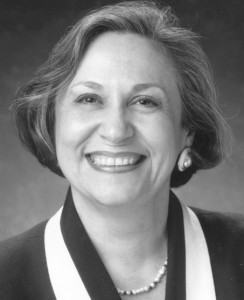 MARY ANN CORLEY, retired Principal Researcher and Director of Teaching Excellence in Adult Literacy (TEAL), American Institutes for Research, and Principal Associate, Adult Learning Partners, LLC – One challenge facing the adult education field is the need to grow a high-quality teaching force. This is especially true in light of recent developments, from the rollout of the College and Career Readiness Standards for Adult Education to the newly enacted WIOA legislation with its focus on transitioning learners to postsecondary education and helping them acquire marketable work skills. These developments ramp up the knowledge and skills that adult education teachers must possess to ensure that students meet with success.
MARY ANN CORLEY, retired Principal Researcher and Director of Teaching Excellence in Adult Literacy (TEAL), American Institutes for Research, and Principal Associate, Adult Learning Partners, LLC – One challenge facing the adult education field is the need to grow a high-quality teaching force. This is especially true in light of recent developments, from the rollout of the College and Career Readiness Standards for Adult Education to the newly enacted WIOA legislation with its focus on transitioning learners to postsecondary education and helping them acquire marketable work skills. These developments ramp up the knowledge and skills that adult education teachers must possess to ensure that students meet with success.
The research on teacher effectiveness is clear: Teacher effects on student achievement are significant; the way to improve student outcomes is to improve the quality of instruction. There is ample research on what constitutes effective professional development: sustained, ongoing, collaborative learning that includes self-reflection as well as monitoring and feedback or coaching. Despite this, the one-shot, “stand-and-deliver” workshop is the vehicle for delivering PD to adult education teachers. Single workshops are useful for transmitting knowledge and raising awareness of issues, but real changes in teaching require longer-term approaches. Because alternate learning models are more costly than the workshop model, they are seen infrequently in adult education. Some programs do offer learning opportunities that engage teachers in knowledge construction and collaboration, centered on discussion of meaningful questions. But these opportunities typically are for a subset of teachers within a program. For most teachers, the workshop remains the dominant PD model.
The reasons are obvious. The part-time nature of the job, with its scant/non-existent benefits or paid prep time, contributes to an ever-changing teaching force, which makes it difficult to provide continuity and depth in teachers’ professional learning. Moreover, funding is inadequate to establish the kind of sustained, collaborative PD system that research suggests is most effective.
Good instruction is not based simply on teaching content, i.e., the steps in argument writing or solving math word problems. Remember that college professor who was an expert in his/her field but could not teach well or engage students? In the same way, the absence of adult education teacher credentialing in many states means that practicing teachers may not be versed in concepts such as how adults learn, how to plan effective lessons and differentiate instruction for diverse learners, how to use questioning to stimulate deep learning, how to encourage students to develop self-regulation skills and monitor their own learning, how to use formative assessment to identify what the student has/has not learned and the teaching adjustments needed to ensure student success.
What, then, are the priority needs for building a quality adult education teacher workforce? In an ideal world, a national, independent professional learning center would be created — a National Adult Education Training Alliance — financed through a partnership of public, private philanthropic, and business interests. The Alliance would be charged with developing and delivering a sequence of standards-based, evidence-based experiences for adult educators aimed at ensuring quality instruction for adult learners. It would work with states to certify teachers as they complete and master various levels within the sequence. It would develop and certify a cadre of trainers for each state to (1) ensure that its adult education teachers progress through the PD sequence, and (2) provide feedback and coaching. This ideal world would have adequate funding for teacher benefits and prep time, which would require significant funding to states, but the return on investment could be staggering in terms of student gains. If we are to succeed in the charge to help students acquire skills to succeed in college and career, we need a professional learning system to prepare a quality teaching force.
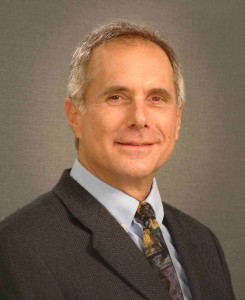 JOHN FLEISCHMAN, Assistant Superintendent, Sacramento County Office of Education; Executive Director, Outreach and Technical Assistance Network (OTAN); Executive Producer, USA Learns – Use of digital technologies with adult learners has been around for many years but effective broad-based use is currently lacking. Today, however, we are at a point whereby a majority of our learners have access to digital devices and Internet connectivity is rapidly becoming omnipresent. To realize the full potential of using new technologies to enhance and extend learning we need to focus on two key areas of professional development: 1) mentoring and coaching support for integrating technology into classroom-based instruction, and 2) training in methods and approaches for implementing online and blended learning.
JOHN FLEISCHMAN, Assistant Superintendent, Sacramento County Office of Education; Executive Director, Outreach and Technical Assistance Network (OTAN); Executive Producer, USA Learns – Use of digital technologies with adult learners has been around for many years but effective broad-based use is currently lacking. Today, however, we are at a point whereby a majority of our learners have access to digital devices and Internet connectivity is rapidly becoming omnipresent. To realize the full potential of using new technologies to enhance and extend learning we need to focus on two key areas of professional development: 1) mentoring and coaching support for integrating technology into classroom-based instruction, and 2) training in methods and approaches for implementing online and blended learning.
Technology Integration Mentoring. Most adult educators have been trained and are knowledgable about the use of print-based instructional materials, but many lack the know-how to effectively integrate technology into instruction. Professional development can offer adult educators the opportunity to understand the technology tools, but more importantly it can offer an approach to adapt their teaching styles and instructional strategies. What are the best ways to bring about this change?
We’ve all experienced one-shot workshops or webinars. Those may be fine for learning how to use a specific piece of hardware, software, or website, but it will never bring about the change in how-to knowledge that is needed. Successful technology professional development programs provide ongoing support through mentoring, coaching, and professional learning communities. Research suggests that teachers participating in a PD program that includes coaching or mentoring are more likely to implement new instructional methods. A 2011 study conducted by the International Society for Technology in Education (ISTE) demonstrated that teachers who received coaching implemented new instructional methods at a rate of 85 percent, while only 15 percent of teachers without coaching support implemented new methods. California’s Outreach and Technical Assistance Network (OTAN) has been operating a technology mentoring program (TIMAC) for more than 10 years with very positive outcomes. Other illustrative examples, although not specifically designed as mentoring programs, are provided by Project IDEAL, the LINCS Learning Portal, and World Education.
Online and Blending Learning Training. Increasing the intensity or amount of instruction is an important goal. Considering the needs and limited time many adults have for classroom-based instruction, one of the best ways to do this is through the use of online or blended learning programs. In fact, in their recent publication, Blended Learning for the Adult Education Classroom, co-authors David Rosen and Carmine Stewart predict that “a blend of face-to-face and online learning is in the future of most learning and teaching,” though they are careful to note that this is not an education panacea.
As noted above, the best way to motivate and enable adult educators to integrate technology in their classrooms is through mentoring or coaching support. The same approach works for implementing online or blended learning programs. However, this mode of instruction is still relatively new for many adult educators, so we also need to build a stronger foundational understanding by increasing awareness, highlighting model programs, and sharing successful practice.
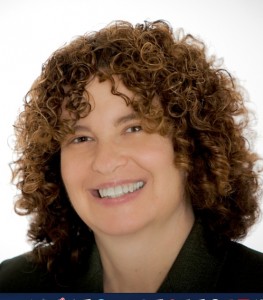 DAPHNE GREENBERG, Distinguished University Professor, Center for the Study of Adult Literacy and Director, Adult Literacy Research Center, Georgia State University – I am often amazed at how rare it is for policymakers, funders, and decision makers to address in any serious fashion the issue of professional development in the adult literacy field. Attention is usually placed on the prevalence of adults with low skills, the long waiting lists for programs, the paucity of research, and assessment of learner gains. But rarely is there talk about professional development, which seems a bit odd to me. Even if an unlimited amount of money was poured into programs so that enough teachers, supplies, equipment, and space were provided to accommodate all adult learners, and even if we figured out the magical test needed to accurately measure learner gains, can we really expect significant improvement in adults’ literacy skills without giving equal attention to professional development?
DAPHNE GREENBERG, Distinguished University Professor, Center for the Study of Adult Literacy and Director, Adult Literacy Research Center, Georgia State University – I am often amazed at how rare it is for policymakers, funders, and decision makers to address in any serious fashion the issue of professional development in the adult literacy field. Attention is usually placed on the prevalence of adults with low skills, the long waiting lists for programs, the paucity of research, and assessment of learner gains. But rarely is there talk about professional development, which seems a bit odd to me. Even if an unlimited amount of money was poured into programs so that enough teachers, supplies, equipment, and space were provided to accommodate all adult learners, and even if we figured out the magical test needed to accurately measure learner gains, can we really expect significant improvement in adults’ literacy skills without giving equal attention to professional development?
One of our key dilemmas is that we aren’t clear about what constitutes professional development in adult literacy. Who gets to define it? Is it based on a K-12 model or a postsecondary model? Should we be talking in terms of a social justice model, or perhaps something totally different? Because we have not defined the parameters of professional development, we do not have the tools necessary to measure whether we have it, and if so, to what extent.
In my view, the starting point for professional development is to treat adult literacy teachers with the respect and dignity they deserve. They need to work full-time and receive benefits. They need to have, at a minimum, some kind of certificate in adult literacy instruction. There should be continuing education units for ongoing training and professional development. There should be paths for promotion and recognition for excellence in teaching.
Our field suffers from the fact that our adult learners are not automatically appealing in the way that cute school children are, nor are they thought to be as promising as traditional high achieving postsecondary students. Society does not regard adult literacy with the same seriousness as it does other educational systems. But the fact is that we are talking about many millions of our fellow Americans who are part of our communities and our everyday lives. If we can increase our attention to professional development, we may feel increased respect for ourselves, which may in turn increase the respect others feel for us. We need to be demanding money for professional development, the same way we demand it for computers, classroom space, and supplies.
In order to increase professional development, I think the following steps should be taken:
- Decide what we mean by professional development
- Treat our teachers with respect and dignity, and express our thoughts about them that way
- Demand funding specifically for professional development
- Make professional development an integral part of existing operating budgets
- Include professional development in all state and regional strategic plans
None of these steps are likely to happen overnight, but they are essential next steps. If we truly instituted all of them, across all programs all across the nation, within a few years we would have a substantial professional development movement in process.
We can and should strive for this. If we get serious about professional development in adult literacy, and stick with it, we can greatly improve the odds of larger numbers of adults reaching their long-term literacy goals.
 DAVID ROSEN, President, Newsome Associates – Many next step priorities in adult basic education and workforce skills depend on expanded funding. For professional development, advancement depends on increased public and private funds at the federal, state, and local levels. It depends on states’ incentivizing and rewarding teachers for a substantial investment of time in pursuing professional development. Advancement also depends on programs’ being able to offer teaching positions that are not only rewarding because adults are satisfying to teach, but that allow teachers to work full-time and earn family-sustaining salaries and benefits.
DAVID ROSEN, President, Newsome Associates – Many next step priorities in adult basic education and workforce skills depend on expanded funding. For professional development, advancement depends on increased public and private funds at the federal, state, and local levels. It depends on states’ incentivizing and rewarding teachers for a substantial investment of time in pursuing professional development. Advancement also depends on programs’ being able to offer teaching positions that are not only rewarding because adults are satisfying to teach, but that allow teachers to work full-time and earn family-sustaining salaries and benefits.
These are my top three priorities for professional development for our field:
- Reward the demonstration of effective teaching skills with full-time positions and competitive salaries and benefits.
- Develop teachers’ own knowledge and skills, and comfort and confidence, in numeracy and mathematics, and particularly in their ability to teach numeracy and math thinking.
- Provide professional development on how to effectively integrate technology through blended learning and teaching digital literacy and problem solving skills.
States vary in their percent of full-time adult basic education teachers, according to one study ranging from 5% to nearly 20%,[1] and estimates do not usually include volunteers. Having part-time and volunteer instructors may benefit adult learners and programs, but a teaching environment that does not offer family-sustaining salaries cannot attract and keep many talented teachers. Full-time K-12 teachers who also work part-time to teach adults in the evening have no time for professional development, and often no interest in it. Until that changes, professional development will continue to have a marginal impact on most of the teachers in state adult basic education systems. We need to significantly increase the percent of full-time teachers in adult basic education.
New college and career readiness standards[2] for adult education have raised the bar for adult education teachers. As high school equivalency exams now are based on these standards or are quickly moving to address them, many teachers need to improve their content knowledge and teaching skills to meet the new standards. This is a particularly difficult challenge for math teachers, for the programs in which they work, and for state professional development systems. Although a few teachers may have a math background and skills in teaching math that are consistent with the new standards, most do not; and many do not feel confident in their own math abilities. For those teachers, addressing this through professional development will require many hours of in-depth learning.
Many adult basic skills programs are moving toward blended learning that includes a mix of face-to-face and online teaching. Teachers have also come to expect blended and online models of professional development. It is an encouraging trend that needs continuing and expanded support that includes professional development on basic digital literacy skills for teachers, how to provide students with effective blended learning models, and how to succeed in online professional development learning.
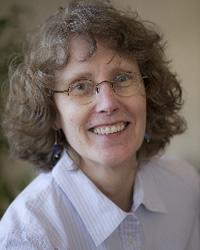 CRISTINE SMITH, Associate Professor, Department of Educational Policy, Research, and Administration, University of Massachusetts – If we want professional development in our field to be high quality enough to meet the needs of adult learners, we need to take three actions.
CRISTINE SMITH, Associate Professor, Department of Educational Policy, Research, and Administration, University of Massachusetts – If we want professional development in our field to be high quality enough to meet the needs of adult learners, we need to take three actions.
First, we need to offer professional development based on the individual needs of practitioners. If differentiated instruction is good for adult learners, then differentiated professional development is good for our teachers, administrators, and other program staff. That means, however, that centralized, statewide PD systems won’t work well. Professional development needs to be organized and designed at the regional, cluster-of-programs, or individual program levels.
States should no longer offer menus of generic PD and expect it to serve the needs of practitioners in a manner that will truly support changes in knowledge and practice. Staffing and funding for professional development need to be pushed down as close to the program level as possible. One positive consequence of doing that is that expensive statewide conferences that eat up the lion’s share of professional development funds should go the way of the past or, at best, be offered once every five years.
Second, we need to fund teacher learning groups at the program level so that professional development can be demand-driven rather than supply-driven. After looking at student work and relevant program data, and after working together to investigate the specific problems and needs of their own adult learners, teachers in programs need to demand specific types of PD inputs—access to research and evidence-based practices—from their local or regional PD unit to solve these problems. The design and delivery of professional development activities should be reactive to the demands of local practitioners, not proactively offered without such input by state level specialists.
Third, we need to reduce the attrition of teachers in our field. Even the best professional development goes to waste when teachers leave after 2 or 3 years. The main reason for attrition is poorly supported jobs, so we need to ensure that as many programs as possible provide a majority of their teachers with full-time, living wage, benefitted jobs as well as paid prep time and paid professional development time.
Dr. Brenda Dann-Messier, recent Assistant Secretary of OCTAE, often talks about how she, as a former program director, structured her program to fund full-time teachers. Others across the country have done the same. However, many program administrators are mystified about how to use current allocations of funding to reorganize the staffing of programs.
I would recommend that OCTAE fund an experienced program administrator with research experience to conduct a qualitative study based on interviewing program directors around the country who have been able, with currently existing funds, to organize their programs so that the majority of teachers are full-time with benefits and paid prep time. The results of this study would give the field and program administrators feasible models and guidance for staff restructuring. Of course, at the same time, we in the field should be actively seeking new funding from various sources to support these jobs. Part of our message to funders should be that new infusions of money should go into improving working conditions of practitioners rather than simply into serving greater numbers of adult learners. That is vital if we hope to provide effective services.
 JACKIE TAYLOR – Professional Development Specialist, past President of the Commission on Adult Basic Education, former policy chair of the National Coalition for Literacy, and Chair Emeritus, Association of Adult Literacy Professional Developers — I have been involved in advocating for professional development for more than 12 years. The great need I see –the elephant in the room, actually – is that the Adult Education field has failed to invest in its teaching force. Teachers want the best for their students; yet we do not provide them with some of the key elements they need in order to help their students succeed.
JACKIE TAYLOR – Professional Development Specialist, past President of the Commission on Adult Basic Education, former policy chair of the National Coalition for Literacy, and Chair Emeritus, Association of Adult Literacy Professional Developers — I have been involved in advocating for professional development for more than 12 years. The great need I see –the elephant in the room, actually – is that the Adult Education field has failed to invest in its teaching force. Teachers want the best for their students; yet we do not provide them with some of the key elements they need in order to help their students succeed.
We face great inequalities and achievement gaps in our nation as the Program for the International Assessment of Adult Competencies (PIAAC) has made clear. The focus on career pathways in the new WIOA also raises the bar for adult educators, yet they are again being asked to do more with less.
Several years ago when I was with the National Coalition for Literacy, I pressed the issue of developing career pathways for our teachers. I realized then how complicated the issue is and understood that if we are going to elevate adult education as a profession, it will take interest and energy from all of us at the local, state, and national levels.
I would personally see the following as top priorities:
- Teacher retention strategies in states that help to build meaningful pathways for adult educators so that they can pursue a career in adult education
- Greater opportunities to improve our profession through degrees, certificates, and licensure
- Better access to full-time positions with good compensation and benefits
- Paid professional development release time so that they can participate in the kind of sustained, evidence-based professional development that leads to teacher change
Until we acknowledge more completely the importance of professional development and take meaningful, strategic steps to make the change we need, I doubt we will see much improvement. If attention focuses more on professional development as a priority issue in the field, and with adequate funding, a number of our national organizations may be able to provide stronger leadership.
Among those that come immediately to mind are the Commission on Adult Basic Education (COABE), the Association of Adult Literacy Professional Developers (AALPD), the National Coalition for Literacy, the Center for Law and Social Policy, and the state directors organizations. They have all taken steps to build awareness and understanding, and in some cases to shape stronger federal and state policy. For example, COABE recently completed a rigorous strategic planning process that should help move COABE’s membership and the field forward. AALPD has recommended policies intended to help adult education practitioners get access to and take advantage of professional development offerings. We could also draw on the successful professional development work being done in some of the states, such as support for full-time teachers being provided by California’s adult schools.
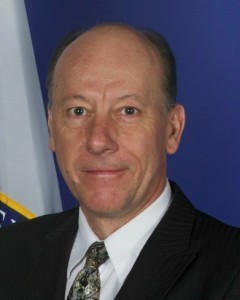 JOHAN UVIN, Acting Assistant Secretary for Career, Technical, and Adult Education, U.S. Department of Education, and former teacher, administrator, teacher trainer, and researcher – According to a New Teachers Project report[3], school districts reportedly spend an average of $18,000 per teacher annually on professional development. But this huge investment produces underwhelming outcomes, with only 30% of teachers improving their practice over a 2-3 year period. Pre-K-12 is not the same as Adult Education, but the report got me to rethinking professional development issues in Adult Education.
JOHAN UVIN, Acting Assistant Secretary for Career, Technical, and Adult Education, U.S. Department of Education, and former teacher, administrator, teacher trainer, and researcher – According to a New Teachers Project report[3], school districts reportedly spend an average of $18,000 per teacher annually on professional development. But this huge investment produces underwhelming outcomes, with only 30% of teachers improving their practice over a 2-3 year period. Pre-K-12 is not the same as Adult Education, but the report got me to rethinking professional development issues in Adult Education.
Our field is at a disadvantage because we lack data that can inform priority setting. We have no recent national data on teacher performance or investment in teacher or staff professional development for adult educators. The best we can do is a back-of-the-envelope estimates of what the maximum investment per adult educator could be based on national activities spending and state leadership funds, usually only around $1,000 per practitioner.
The Department of Labor reports[4] that half of 77,400 adult literacy and high school equivalency teachers in 2012 held paid jobs and earned more than $48,590 per year. Moreover, a B.A. is often expected as the entry-level training requirement. According to data from people served under AEFLA, the total labor force in 2014 was 85,660 including 56,204 teachers, 13,731 paraprofessionals, 11,608 local administrative staff, 3,679 counselors, and 438 state-level staff. About 55% of these personnel were part-time paid staff, 22% were paid full-time, and 23% were volunteers. Part-time workers represented 72% of all paid staff. Interestingly, state data indicates that in 2014 about 42% of local paid staff had some kind of certification.
In the areas of retention and compensation, despite the existence of some data at DOL and in the states, we also do not have good recent national data to either reject or confirm the anecdotal evidence that teacher retention is poor and compensation low. We do know that the matter of part-time professionals is a complex issue, not just a matter of funding inadequacy. A large number of part-time positions are a function of institutional practice and choices made by leaders that fail to put the interests of learners and staff first.
Data does exist that shows enormous variations among state and local grantees on key performance indicators. Adult learners face far different success outcomes, depending on the state or local program they enter. The odds of success are 3-4 times more likely in some programs and states than in others. This is a major lost opportunity issue that warrants serious attention. The literature tells us some useful things about what makes for teacher effectiveness (though most of it is in the Pre-K-12 setting), but we must learn more about the relationship between adult education teachers and outcomes, and about how the largely part-time workforce impacts on effectiveness, especially for disadvantaged students. There are some emerging areas of understanding–some brought about by requirements of WIOA–that will help. For example, we are beginning to better appreciate the advantages of blended learning models and the use distance technology as tools for teacher learning. But we need to do much more.
So how do we move forward? OCTAE’s Making Skills Everyone’s Business states in Strategy #4 that success in helping low-skilled youth and adults enrolled in programs to reach higher levels of education and employment hinges on what happens between students and teachers. No matter how strong the community partnership or how well designed the strategy, if teachers of foundation skills are not engaged, prepared, and supported by effective leaders and programs to deliver high-quality instruction, student outcomes are unlikely to improve.
WIOA makes it clear that the teaching and training workforce must adapt to the rapidly evolving adult skills reality, such as the growing emphasis on college- and career-preparation, emphasis on transition to credit-bearing college-level coursework, new high school equivalency exams linked to rigorous college- and career-readiness standards, career pathways and integrated teaching models, employer engagement, and requirements for technology integration. Clearly, leveraging WIOA should be central to our approach.
Four immediate priorities have the potential to move us forward:
- Identifying the skills and attributes of highly effective – not the same as highly qualified – teachers and leaders.
- Identifying how these effective practitioners developed these attributes and skills
- Selecting appropriate service delivery models for supporting individual practitioners.[5]
- Expanding the initial research on teacher effectiveness by adding rigorous data collection and evaluation components to new professional development delivery models we explore.
We should also do several other things as we proceed. For example, we need to create good learning environments. A good place to start would be a conversation with teachers about what would make them consider and enter Adult Education as a career and what would motivate them to stick with it. We can also bring together providers to consider how working conditions can be improved that have the potential to solve the part-time issue. A third thing is to develop a career pathway model. We promote career pathways for adult learners but have yet to do the same for adult educators. We ought to consider developing such a model for Adult Education professionals. Not least, we do have some proven models of success and we need to learn from and replicate or adapt them. Examples are the programs of the Greater Pittsburgh Literacy Council, the Durango Education Center in Colorado, and work of the City Colleges of Chicago. In the Chicago model, for example, teachers get performance bonuses when their programs reach or exceed targets for student achievement and enrollment. The first round of bonuses was given in September 2013. The bonus amount will rise each year, along with the targets, and by 2016 could amount to as much as 7 percent of teachers’ base pay.
It is time to solve our Adult Education professional development problem. Our learners deserve a stable and effective teacher and leader workforce. Responsible teachers and learners deserve greater respect, visibility, opportunity, and compensation.
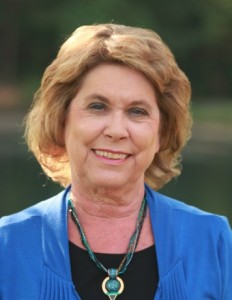 RANDY WHITFIELD, Principal Associate, Adult Learning Partners, Inc.; retired State Director of Adult Education, North Carolina Community College System –– Professional development for all adult education staff is critical to student success. However, many adult educators do not take advantage of the training opportunities available to them. One of the greatest barriers to professional development is that most adult education teachers are part-time. They usually have other full-time jobs and do not always have the time to attend adult education training. Some are busy with families and have other responsibilities. Some are volunteers and only able to spend time tutoring their students.
RANDY WHITFIELD, Principal Associate, Adult Learning Partners, Inc.; retired State Director of Adult Education, North Carolina Community College System –– Professional development for all adult education staff is critical to student success. However, many adult educators do not take advantage of the training opportunities available to them. One of the greatest barriers to professional development is that most adult education teachers are part-time. They usually have other full-time jobs and do not always have the time to attend adult education training. Some are busy with families and have other responsibilities. Some are volunteers and only able to spend time tutoring their students.
Some programs have addressed this issue by offering more on-line training and training sessions at night and on weekends. But the best way to improve participation in adult education training is to hire more full-time adult education staff, and that would require successful marketing to lawmakers at the national and state levels to obtain additional funding.
Most adult education teachers and volunteers are extremely dedicated to helping students and just need to be convinced that attending training will help them learn new methods to improve student success. Program managers must set the expectation that teachers will constantly try to improve instruction and reward them when they do. An obvious reward would be an increase in salary, but there are many other non-monetary awards such as food, recognition of a job well-done, and increased stature in the profession generally.
Program managers usually require teachers to attend local training sessions, but often the main content is on how to fill out paperwork and collect student data. Although paperwork and improving data collection are critical, quality instruction is the best way to improve performance outcome measures and increase student success. For managers to be able to recognize quality instructional practices, they need to know how to be successful teaching adults. Thus, program managers themselves, especially those with little to no background in adult education, need to attend sessions on how to teach adults so that they are able to help teachers and to effectively evaluate them.
Attending training sessions on quality instruction is important, but it is not enough. Managers should not only require professional development of all staff, they must ensure that appropriate methods to improve instruction are implemented. Having full-time lead teachers who are very well-trained and can mentor others is critical, even though it is an additional expense.
Finally, training for adult educators must be delivered by trained professionals who themselves know how to teach adult learners. Effective trainers will ensure that their sessions engage people of all different learning styles, include audience participation, directly relate to the classroom, and contain simple practices that may be easily be put into use. They will also provide follow-up after training to help teachers with implementation issues. Professionalizing the trainers of adult educators will in itself increase participation.
[1] Building professional development systems in adult basic education, A Belzer, C Drennon, C. Smith, NCSALL – The Annual Review of Adult Education, 2001.
[2] See OCTAE publication titled College & Career-Ready Standards and Assessments.
[3] The New Teacher Project report is available at this link.
[4] Go to http://www.bls.gov/ooh/education-training-and-library/adult-literacy-and-ged-teachers.html
[5] We have some data on the effectiveness of the STAR Project – one of the few professional development efforts that has reached some scale. The data on our induction pilots are promising but cost is a concern from a scaling perspective.

I’m sure you are aware of the recent attacks on PD. Lyndsey Layton in the Washington Post cites a study of 10,000 teachers by the New Teacher Project stating that professional development is costing taxpayers billions of dollars and is largely a waste. Hanushek at Stanford agrees that school districts have failed to scrutinize the quality of their PD programs. Karen Hawley Mills, president of Education Resources Strategies, said her organization has found similar results.
We should not be surprised by these findings. Back in the 1980s Joyce and Showers found that about 5% of teachers changed their teaching as a result of PD – even when they found the PD enjoyable and informative. It was only when teachers coached other teachers that percentages grew from 5% to nearly 90%. Not only do we not know to what extent teachers change their instructional strategies, but we rarely know to what extent students improve their learning as a result of PD.
Fortunately, two programs, when correctly implemented, have changed both teaching and learning: 1) The Professional Learning Communities (PLCs) do focus on student learning and adjust faculty instruction accordingly. 2) The recent research on Project Based Learning (PBL) now documents some remarkable effects in K-12 programs especially, but in college and graduate programs as well. Since 19878 Harvard Medical School has used PBL for the first two years of medical training. Now they have broadened that approach to the entire program. Schwartzstein (Harvard Magazine, Sept-Oct 2015) reports that students felt the “curriculum was mostly about memorization of facts as opposed to development of reasoning and thinking skills” (p.19). He summed up the new approach by saying “time needs to be spent on things you can’t google.” Likewise, a new book, Setting the Standards for Project Based Learning, has been published jointly by ASCD and BIE. It details the extensiveness of PBL, the research, and the results at several levels of education. Not mentioned are any studies in adult education and I have found few examples as well. One exception was in your recent newsletter under “Relationships Between Competency-based Pathways and Career Technical Education.
The literature is also abundant with the rapidity of technological change – especially in robotics. Derek Thompson in an Atlantic article (July-Aug 2015) titled “A World Without Work” quotes Benjamin Hunnicutt from the University of Iowa as saying, “Colleges should reemerge as cultural centers rather than job-prep institutions.” Even Carol Ann Tomlinson (ASCD’s EL Magazine, Sept 2015) noted that, as teachers they felt guilty about focusing on student proficiency as indicated on “tests with long-expired freshness” rather than helping them to become better questioners and thinkers.
Otherwise, I would agree with most of your respondents that without adequate funding and more full-time instructors, adult education PD has much to wish for.
I agree with Mr. Uvin concerning creating good learning environments starting with teachers and their considerations concerning Adult Education as a career and what extrinsic or intrinsic motivational factors would persuade them to enter this field. Although I work in the Office of Adult Education now, I am a former high school dropout and became an adult learner. It is important for the adult educators to know how to teach adult learners using real-life application. That is what aided in my own academic success.
I would love to see what Ms. Smith suggested take place with OCTAE funding research to conduct a qualitative study based on interviewing program directors around the country who have organized their programs, “so that the majority of teachers are full-time with benefits and paid prep time,” and whether this impacted teacher retention and increased completion results with students.
Spot on with this write-up. Thanks for the information. This website needs to be more widely known.